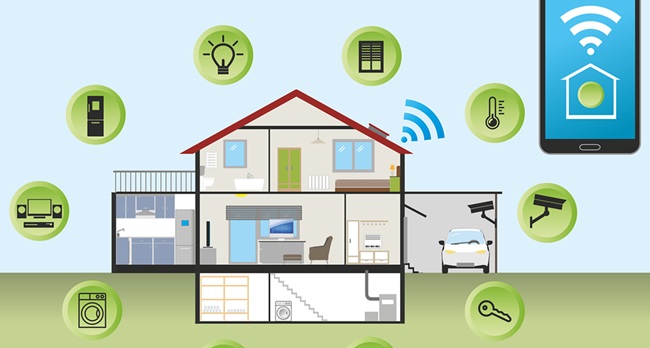
Smart home products – such as smart lights, video doorbells and voice-activated speakers – can be very useful for aging in place. These devices can add safety and convenience to a home by providing voice and app-controlled operation, which is extremely helpful for seniors who have mobility issues or reduced vision.
Smart home technology can also provide family members peace-of-mind by giving them the ability to electronically keep tabs on their elder loved one when they can’t be there.
If you’re interested in adding some smart home products to a house, it will need home Wi-Fi installed, and the resident will need either a smartphone, tablet or smart speaker to operate them. To help you get started, here are some different types of devices to consider that are very helpful to older adults.
Smart speakers: A smart speaker – like the Amazon Echo, Google Nest or Apple HomePod – can serve as the brains of a smart home, controlling the devices with voice commands or automating them.
These devices can also play favorite music, read audiobooks, make calls, set timers and alarms, provide reminders for medications, appointments and other things, check traffic and weather, answer questions, call for help in emergency situations and much more – all done by voice commands.
Smart light bulbs: To help prevent home falls – which are often caused by fumbling around a dark room looking for a light switch – smart light bulbs allow you to turn lights on and off by voice command, smartphone, or tablet. These bulbs can also change brightness and color and be programmed to come on and off.
Smart plugs: These small units plug into a standard outlet and connect to the internet. That means you can control whatever is plugged into them – from a space heater to a coffee maker – using your voice or phone.
Video doorbell: Safety is also a concern for older adults, especially those who live alone. A video doorbell allows them to see and speak to visitors at the door without having to walk over and open it.
Smart locks: For convenience and safety, smart locks give keyless entry to a home, provide customized access to family, friends and caregivers, and let you monitor who comes and goes from the house.
Smart thermostat: This lets you preprogram or manually control the temperature in a home with voice command or via phone, and lets you monitor it too.
Smart smoke alarms: These will alert you when smoke or carbon monoxide is detected and will also send alerts to your phone if a problem is detected.
Stovetop shut-off: To prevent home cooking fires, smart stovetop shut-off devices, like the IGuardStove, will turn off electric and gas stovetops when left unattended, and will alert you via text.
Medical alert system: These devices provide wearable wrist and/or necklace emergency buttons that allow someone to call for help if they were to fall or need assistance. Many systems today also provide voice activated and fall detection features, and caregiver tracking apps.
Cameras and smart sensors: If someone needs more in-depth monitoring, there are indoor cameras you can install so you can see, hear, and talk to them from your phone. Or, if that’s too intrusive, you can install smart contact sensors on their doors so you can know when they come and go, or on their refrigerator door so you can know if they are eating.
Jim Miller publishes the Savvy Senior, a nationally syndicated column that offers advice for Boomers and Seniors.




Comment here